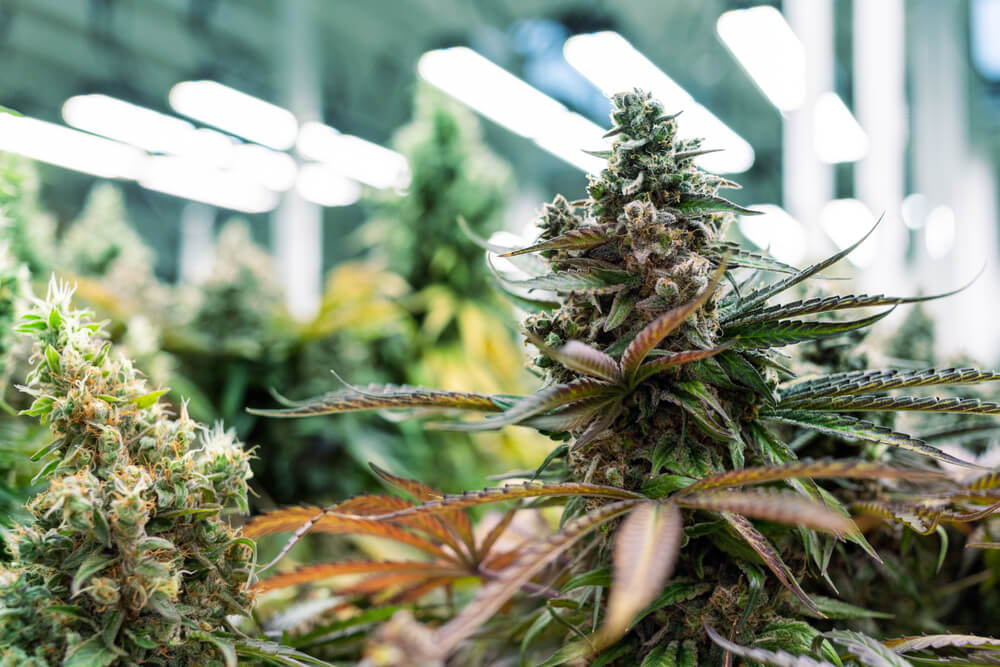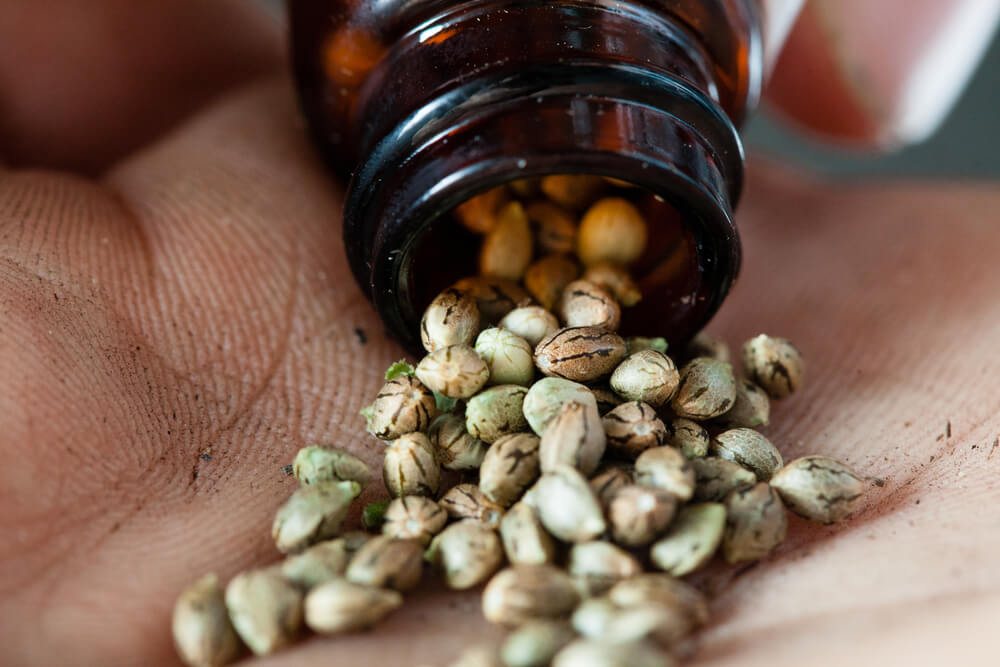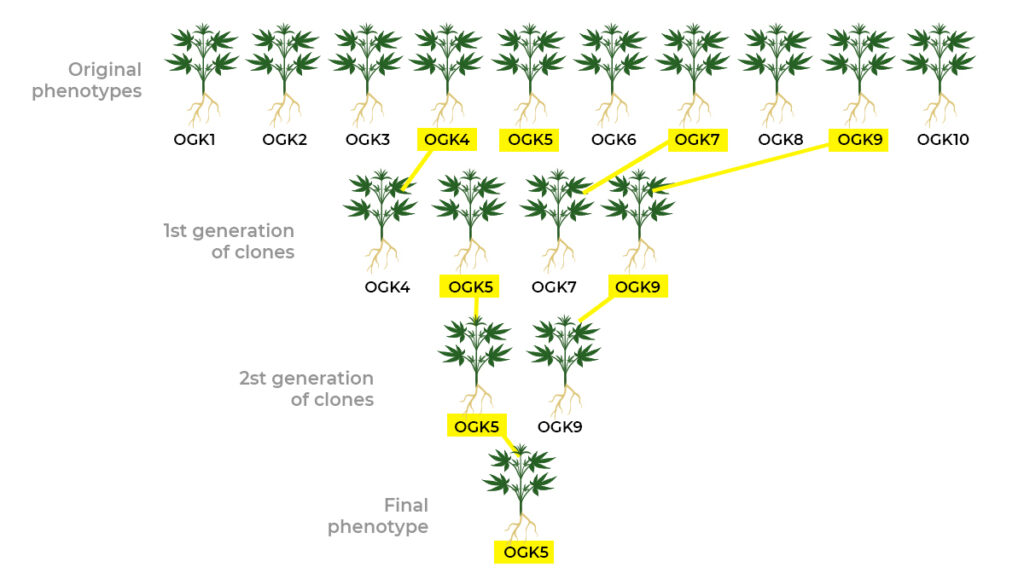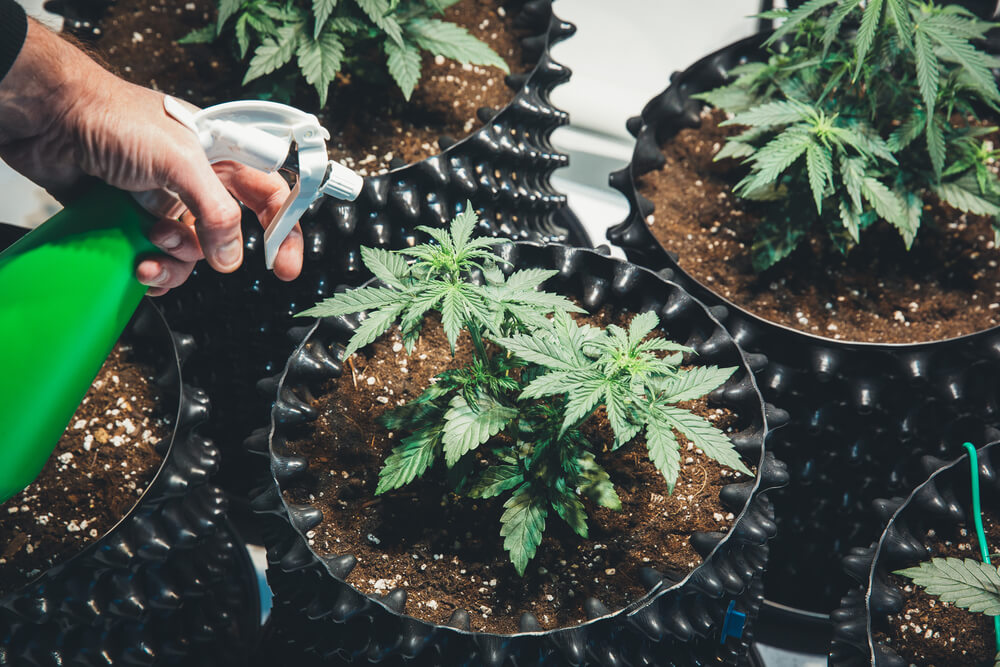Do you know what a phenotype is? Hot tip: it’s the reason why some strains have numbers in them!
Ever wonder why it’s Gorilla Glue #4 and Love Potion #9 that are so famous and not Gorilla Glue #2 or Love Potion #5?
From phenotype to genotype and everything in between, there is a ton of complex terminology in the world of weed!
This vocabulary comes from newfound knowledge and product creation following the widespread legalization of cannabis across several regions, including Canada and specific states across the US.
Since then, the world has experienced a reefer revolution, bringing a new wave of innovation with it.
However, today, we are taking a step back to discuss a more simplified, natural topic.
Have you ever heard the terms genotype and phenotype tossed around in your weed circles? Often, they’re used interchangeably, but this is a common misrepresentation and misconception.
With this in mind, we’re delving deeper into what a cannabis phenotype is. As well as, how they differ from genotypes, and why they matter.
So, strap on your thinking caps, and let’s get started!

What is a Phenotype?
If you aren’t well-versed in the realm of cannabis growing techniques, we’ll go slow and start by saying that cannabis plants have two main features that impact how they grow.
One set involves its lineage and genetics.
In other words, how its parent strains or biological predispositions impact its various qualities.
The other surrounds how its particular environment impacts its characteristics.
The factors that influence a marijuana plant’s genetics is what is known as their genotype.
A genotype allows cannabis, and a wide range of other organisms, to grow in a broad spectrum of different manners.
Visually, however, the various observable characteristics are what is known as the plant’s phenotype. In this way, a phenotype is the particular indoor or outdoor conditions – depending on the particular grower’s specifications and ideal marijuana growing conditions – that generate a cannabis strain’s observable characteristics.

In short, a phenotype, also referred to as phenos for short, makes up the environmental elements that pull from the genetics of the weed plants to create specific strains. The specific growing environment plays a critical part in controlling how a strain will grow, impacting its smell, colour, shape and potency.
That said, it’s also important to mention that even plants that fall under the category of being considered the same strain can still have their own unique phenotype.
This difference is why Gorilla Glue #4 is famous – the 4th phenotype was the best out of all the others!
It’s sort of like how you share similar genetics with your parents or siblings but aren’t entirely identical. You may have the same hair color or eye color, but your DNA won’t be 100% the same.
The same goes for weed plants. Who knew!
Why Does it Matter?
Basically, through the valiant efforts of cannabis crusaders of yesteryear, gone are the days of having strictly two classifications of either indica vs sativa cannabis plants.
Even still, those categorizations aren’t as simple or straightforward as you might think.
However, via the exchange of seeds and growing techniques across the cannabis community throughout the years, a new category in itself began to emerge – hybrid strains.
Related: Why Indica and Sativa Differences are Becoming Smaller
With the creation of this latest sector, marijuana cultivators and growers could create new strains by experimenting with the newly available expansive catalogue of genotype and phenotype plant options to create entirely new genetic combinations.
This diversity allowed for further personalization in breeding practices to enhance the various plant traits and create a more catered experience.
With these new advancements, breeders could elevate potency and other distinct elements such as specific flavours, smells, and effects.
However, the environmental conditions comprising these breeding methods play a substantial role in the overall growing outcome of the particular strain.
Elements such as temperature, lighting, humidity levels, nutrients, and more challenging factors to regulate, including the level of air circulation, trace gasses in the air, varying water sources and differences in day and night temperature fluctuations, all play into how weed will grow.
These conditions all start with picking a suitable phenotype.
After growing a wide selection of seeds, growers will pick the best one for its most desirable traits. They look out for advantageous characteristics, including bud density, aroma, flavour, colour, yield, and more.
 Growers pick the best cannabis seed for its most desirable traits and advantageous characteristics.
Growers pick the best cannabis seed for its most desirable traits and advantageous characteristics.
Then, once they’ve selected their plants of choice. They will yeet all the other ones without so much as a “later, fam!”
With this in mind, let’s take a moment to honour these honourable reefer rejects…Done? Okay. Moving on!
While it may seem like a straightforward process, this elimination stage may take a few generations-worth of plants over an extended time to do. Still, you know what they say, patience is a virtue!
All the hard work pays off in the end, and the top pick is then produced in bulk for retail. This creme de la cannabis crop is what you would buy in a dispensary. However, for you high-tech tokers out there, the bud you would purchase when you buy weed online.

Needless to say, a lot of thought and consideration goes into creating various cannabis strains for your smoking pleasure!
Through various circumstances, including a grower’s particular setup and equipment, the plant’s specific phenotype. As well as, other environmental factors. Growers could end up with an entirely new phenotype that subsequently becomes an entirely new strain unique to that particular grower.
So, growers need to have a firm comprehension of the specific ideal growing conditions for particular seeds to ensure the best possible yield to develop these new cultivars.
Genotypes vs Phenotypes – What’s the Difference?
To reiterate the definition of a phenotype we outlined above, a cannabis plant’s phenotype comprises the various environmental factors and elements that influence its growing behaviours and development in association with the individual plant’s genetics.
Related: Why Are Some Weed Strains Purple? What Causes Purple Weed to Grow?
Within the same realm, this unique set of genes are what is known as their genotype.
In other words, genotypes dictate how the plant will grow and permits the plant. Within the context of cannabis and several other types of organisms – to grow in a wide range of ways, depending on the particular environmental factors.
To put it plainly, genotypes involve the particular genetic makeup of an organism or its unique combination of genetics inherited from its parent organisms.

Related: Why Landrace Strains are the Forefathers of Weed
Differentially, the phenotype comprises an organism’s unique and observable physical traits or the resulting plant in itself. Thus, combining the genetics and environmental factors into the final product.
The various traits of phenotypes may include the plant’s individual colour, smell, flavour, bud density, terpene profile and more.
Phenotypes – Setting the Stage for Cannabis Characteristics
Phenotypes play a crucial role in the particular development and growing behaviour of cannabis plants. Coupled with its genotype, these combinations of traits create the building blocks of the cannabis strains we all know and love.
While they may seem small or even too subtle to notice characteristics. Growers have more opportunity than ever to essentially play ganja God and manipulate these compounds to create entirely new products.
These new items can emphasize or hone in on multiple or specific therapeutic or recreational qualities to help better cater to users’ individual needs and desired effects and outcomes. It’s this dank diversity that makes the weed world go ’round!
It all comes down to understanding how these various factors influence an organism to create a unique sequence of determined and recessive traits. So, the next time you toke on some gorgeous green. Take a minute to appreciate just how much science went into its generation!
Happy toking!

